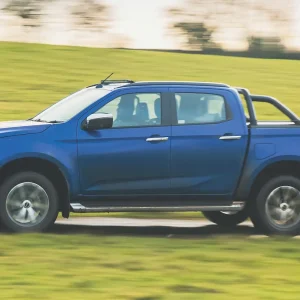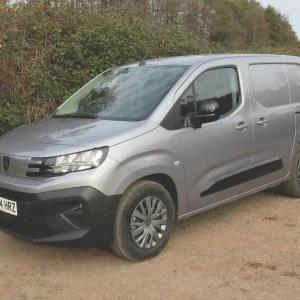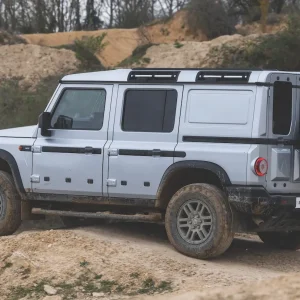In the 3.5t sector, choice is key. All manufacturers offer their contender in a mind-boggling combination of wheelbase, length and height. At the opposite end of the scale, all that’s really needed is a compact van, just big enough to do the job, making it easy to manoeuvre and cheap to run. Enter the Fiat Fiorino, way back in 1977 – can you believe that? – based on the Fiat 127 hatchback, like your granny had. It lasted until 1988 when the second cubist generation appeared and that kept going as a model type until 2007, although like many Italian models of the era, it had undergone five face lifts. The one we have here is the third full generation taking it up to 2021 and sharing its design with the Citroën Nemo and Peugeot Bipper in the best Sevel traditions.
The Fiorino offers a load length of 1,523mm meaning you can just squeeze in a Euro-pallet, and has a load height of 1,205mm This gives it a load volume of 2.5m3 but with the optional folding passenger seat the load length increases to 2.5 metres and the volume gains too for a total of 2.8m3. The rear doors open through 180° and you could specify the Fiorino with one or two sliding side doors, giving excellent access for a van in this class. The payload is good, with 660kg being offered. More than enough for a van in this class and cementing the Fiorino’s raison d’etre, to be just enough and with no excess.
The same could be said of the engine, as manufacturers embark on a torque-war in the larger classes, the Fiorino has just one engine choice – there previously was a petrol option, but the phrase ‘flogging a dead horse’ was invented for it. The 1.3L Multijet diesel is available in two states of tune developing either 80 or 95hp. The 80hp is fine, the 95hp a bit more relaxed, thoroughly developed, proven and refined unless you rev it unnecessarily hard. Combine this with a light clutch and steering, slick gear change and good visibility – apart from judging the extended frontal protrusion – and the Fiorino is at home in town.
The driving position is good, something the car-cube vans always did well and Fiat’s boxy infotainment system sitting atop the facia adds to the upright feel.
However, the screen, standard on SX and above, is quite small – and satnav was a cost option – making a contrast to the good general ergonomics. Plenty of little storage cubbies abound although none are generous and the door bins are shallow. Equipment levels are moderate, the SX offers Bluetooth and wheel-mounted radio controls whilst the Technico adds aircon, reversing sensors and cruise control.
Today the Fiorino is in a class of one, so we should be grateful it still exists. It’s not big and it’s not clever, but it is a capable and economical, little urban workhorse.
Five best options
1) 95hp engine
2) SX trim
3) Technico trim
4) Twin side loading doors
5) SatNav option
Five best avoided
1) 80hp engine
2) Entry-level trim
3) Combi version
4) Petrol engine
5) Non-factory accessories
Second-hand buys
|
Version |
Plate |
Year |
Mileage |
Price ex.VAT |
|
1.3 multijet SX |
17 |
2017 |
84,000 |
£5,495 |
|
1.3 multijet SX |
18 |
2018 |
16,600 |
£10,295 |
|
1.3 multijet SX |
19 |
2019 |
9,800 |
£10,995 |
|
1.3 multijet Technico |
20 |
2020 |
23,000 |
£11,995 |
|
1.3 multijet Technico |
21 |
2021 |
11,500 |
£12,995 |





